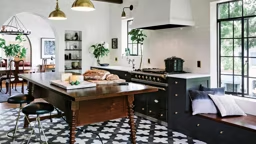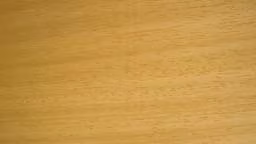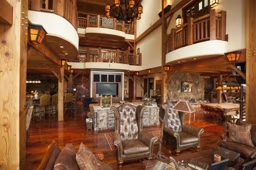Homeowners fall in love with wood flooring for reasons that go well beyond its beauty. Inherently warm and long lasting, solid wood is a natural favorite for homeowners and designers alike. Most solid wood floors can be sanded and refinished multipled times, making them the best choice for longevity. Also, when finished onsite, solid wood floors can be stained to match trim or any other design element, including your frame. Since many timber homes are passed down from generation to generation, solid wood floors make sense from a durability standpoint, too. Here are some of the big reasons folks love solid wood floors:
Durability: A solid wood floor can last for a century or more, thanks to a durable finish that can be easily repaired whenever it starts to wear thin.
Warmth: Wood also offers a solid, warm feel underfoot. Mother Nature designed this resource to be an excellent insulator. With thousands of air chambers per cubic inch, wood floors are much cozier than other flooring options.
Maintenance: hardwood floors are a breeze to clean — and simply incorporating them into your home increases its value.
Permanence: A vintage version of solid wood, antique or “reclaimed” floors bring instant history to a new home. Many found woods have been salvaged from old barns or industrial buildings. Found flooring is also quite durable and environmentally friendly, since it makes use of lumber that was discarded.
Selecting Your Wood Flooring
The first step in selecting wood floors for your home is choosing a type, from vintage “found wood” to engineered wood products. But even with the wide variety of options out there, many people (especially wood-home enthusiasts) find themselves coming back to traditional, solid wood floors time and time again.
- If you choose a solid wood floor in your home, make sure you consider a factory-applied finish, which will make installation much easier. No dust from sanding, no fumes from finishing and no waiting around for the floors to dry.
- Consider your home’s activity level when deciding on a wood species. In homes with kids or pets, most floors (especially American hardwoods like maple, walnut and cherry) can weather a little abuse. Softwoods like southern yellow pine are great options, too — as long as you’re prepared for dents and scratches to surface over time.
- Changes in humidity can lead to squeaking and buckling. This sensitivity to moisture rules out wood floor installation in basements and most bathrooms.
5 Steps to Protect Your Wood Floors
- Invest in a vacuum designed specifically for wood floors and shake out your doormats weekly to keep dirt and gravel to a minimum.
- Wood floors often fade or darken over time. To minimize color variation, move your area rugs around — and even your furniture — once each season.
- A humid household can result in cracks as your floors expand and contract. Here’s a test: If the crack is no wider than the face of a dime, it will probably close up. Anything bigger may need repair.
- Some folks like the “worn in” look. If you’re not one of them, research tough finishes for your wood floors.
- Place rugs in high traffic zones, such as foyers and the area in front of the couch.
Popular Species for Wood Flooring
Click through the gallery below to learn more about the pros and cons of popular wood species:
See also: Are Exotic Hardwoods Worth the Cost?












